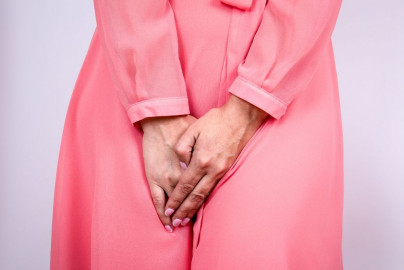Blog

Urinary Incontinence: Causes, Types, and Effective Management Strategies
Urinary incontinence, often referred to as “incontinence,” is a common symptom that impacts 50% of adult women and becomes increasingly common with age. Incontinence is the involuntary leakage of urine. For people affected by incontinence, it is a source of significant distress, inconvenience, and in some instances, embarrassment. As a symptom, rather than a medical condition, incontinence has a variety of causes and types. Many people who experience urinary incontinence have questions about its cause, but, perhaps more importantly, they want to know how it can be managed.
What is Urinary Incontinence?
Urinary incontinence can involve symptoms of urgency (i.e., needing to rush to the bathroom), and frequency (i.e., the need to urinate often). The severity of the condition can range from occasionally leaking urine when you cough or sneeze to having an urgent need to urinate that prevents you from getting to the bathroom in time. Understanding the various types of urinary incontinence, and its underlying causes, and learning effective management strategies can help those who are dealing with incontinence.
Types of Urinary Incontinence
There are several different types of urinary incontinence including:
- Stress incontinence - involves urine leakage when coughing, lifting heavy objects, sneezing, laughing, or exercising. Stress incontinence is triggered when these activities put pressure on the bladder.
- Urge incontinence - also known as overactive bladder (OAB), this condition is characterized by sudden and intense urges to urinate, followed by involuntary leakage of urine.
- Overflow incontinence - is when the bladder doesn't empty completely, causing it to overflow, which results in frequent or constant dribbling of urine.
- Functional incontinence - a type of incontinence caused by either mental or physical limitations (e.g., cognitive impairment or conditions that impact mobility, such as arthritis) that make it challenging to get to the bathroom in time, leading to involuntary urine leakage
- Mixed incontinence - involves a combination of different types of incontinence.
Causes of Urinary Incontinence
There are many possible underlying causes of urinary incontinence, here are some of the most common examples:
- Weak or overactive bladder muscles - the bladder muscles enable you to control urination; when these muscles are weak, or when they contract or tighten (i.e., bladder spasms), it causes the urge to urinate. Bladder spasms cause the bladder muscles to suddenly contract, causing an urgent need to urinate and forcing urine leakage from the bladder. When this happens, the condition is called urge incontinence or overactive bladder.
- Hormone changes - such as those that occur during menopause, cause a decrease in estrogen levels which results in a weak bladder and urethra (i.e., the tubular structure that allows urine to leave the body) muscles.
- Urinary tract infections - incontinence can result from urinary tract infections.
- Pregnancy and childbirth - pregnancy and childbirth can stretch and damage the nerves and muscles that control the bladder.
- Neurological conditions - certain neurological conditions, such as stroke, dementia, multiple sclerosis, and Parkinson's disease, can interfere with nerve signals that control bladder function.
- Various substances - some substances, such as diuretics (i.e., medications that promote urine production), caffeine, alcohol, nicotine, and artificial sweeteners can irritate the bladder and worsen symptoms of urine frequency and urgency.
Management Strategies
There are several strategies known to be effective for managing urinary incontinence, including:
- Lifestyle changes - including regular exercise, maintaining a healthy weight, and avoiding certain substances (e.g., coffee and other caffeinated drinks, alcohol, smoking, and artificial sweeteners)
- Perform regular Kegel exercises - (also known as pelvic floor muscle exercises) to strengthen the muscles that control urination
- Bladder training - improving bladder control and gradually increasing bladder capacity by lengthening the time between bathroom visits
- Medications - certain medications may be prescribed, such as a drug called Ditropan, to calm an overactive bladder, which is given for urge incontinence
- Aids and devices - there are specific aids, such as a device (i.e., a ring pessary) inserted into the vagina to support the bladder, that can improve incontinence symptoms for people with stress urinary incontinence and overactive bladder. Absorbent pads or adult incontinence underwear can help manage urine leakage.
- Invasive treatments - minimally invasive procedures or surgical procedures can help prevent leaks from certain types of incontinence. For example, a colposuspension procedure involves making a small incision in your lower abdomen, pulling up the neck of the bladder, and suturing it into this lifted position. A colposuspension procedure is performed to help prevent involuntary leaks from stress incontinence.
When to See the Doctor
Untreated incontinence can restrict your activities, limit your social interaction, and Increase the risk of falls in older adults. Incontinence can also be a sign of a more serious medical condition.
Although it's normal to feel uncomfortable discussing incontinence with a healthcare provider, seeking medical advice is crucial, particularly if incontinence becomes frequent or negatively impacts your quality of life.
Our specialists at Pacific Women’s Obstetrics and Gynecology tailor their services specifically for women so that they can meet their specific healthcare needs and provide preventative care. Contact us today to request an appointment.
Back to blog